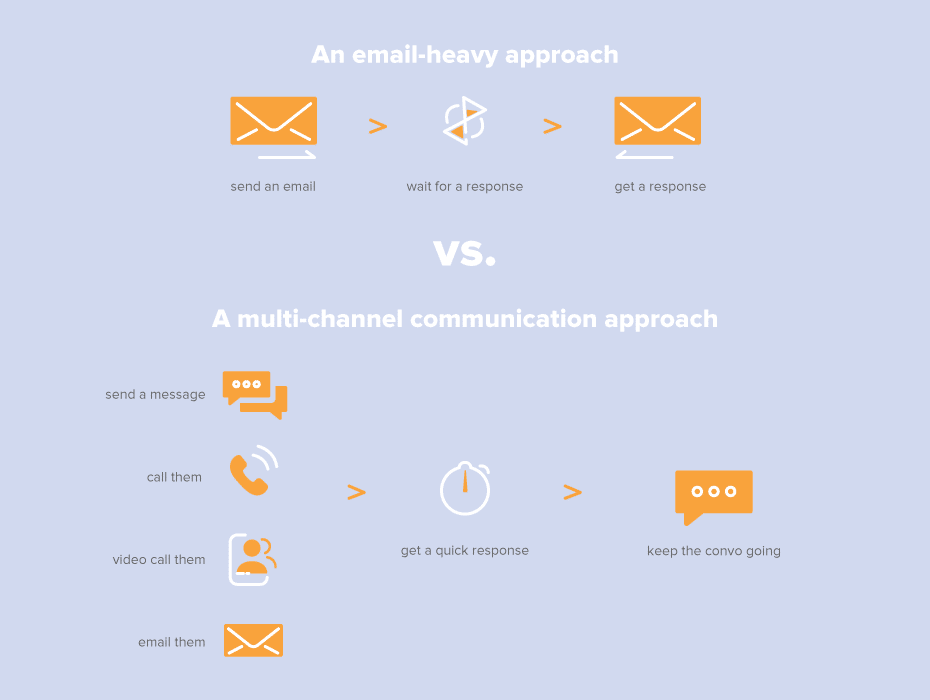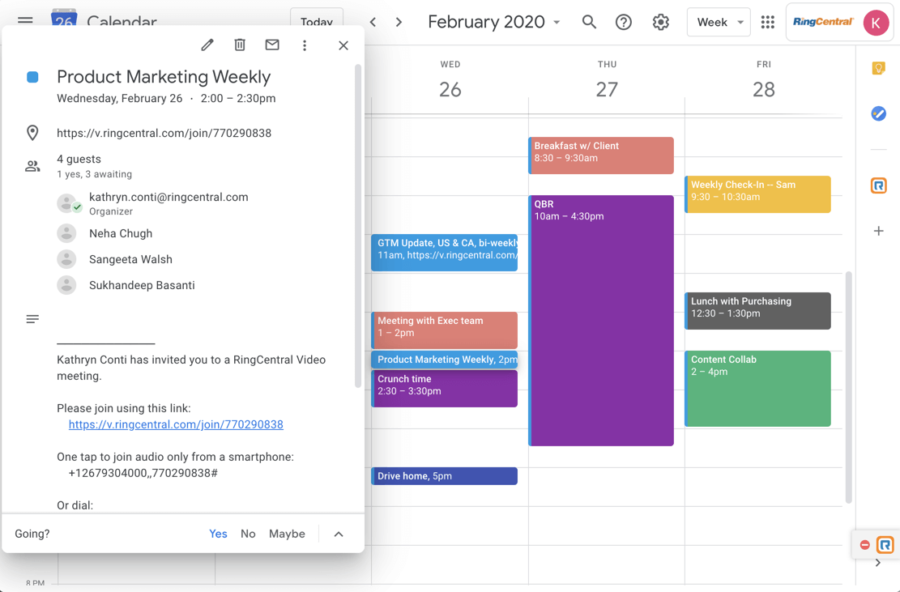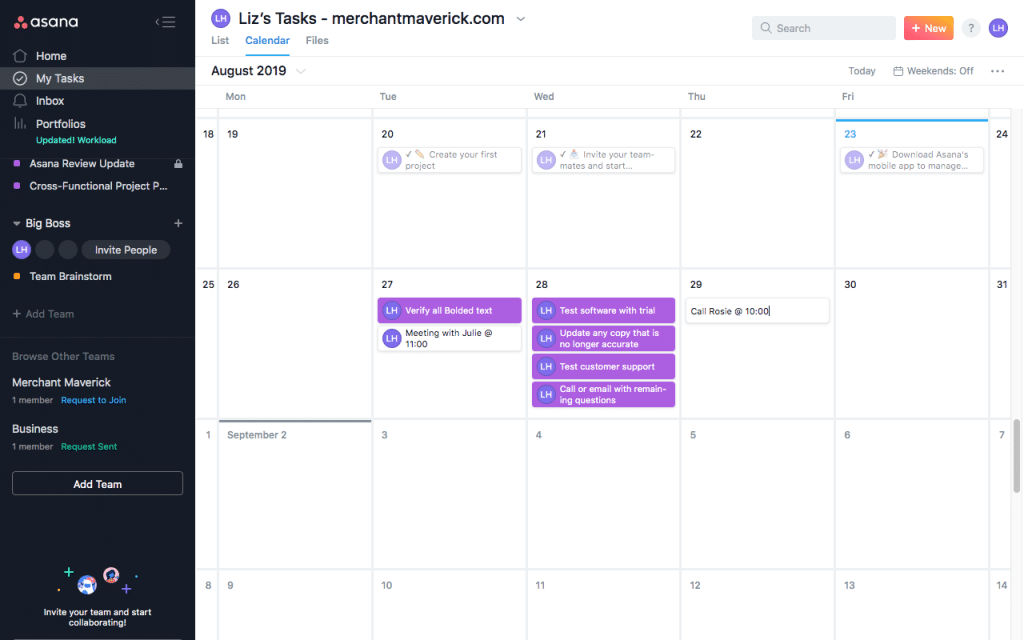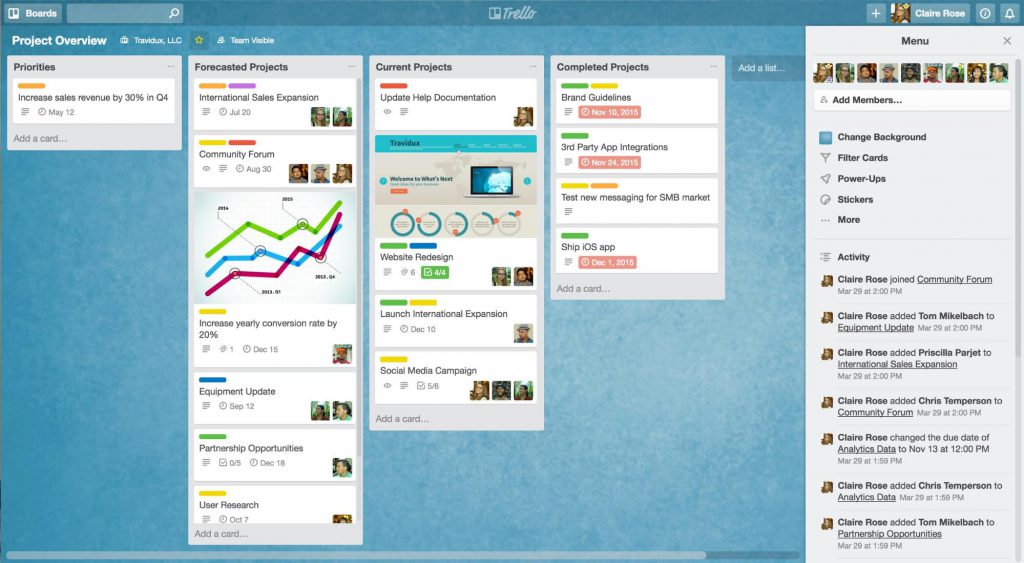Collaboration in the workplace used to be limited to in-person brainstorms and project coordination. But the way we work is changing. Especially how we work together.
As companies become more global and complex, the majority of work has become increasingly team based. One study published in Harvard Business Review1 found that ‘‘the time spent by managers and employees in collaborative activities has ballooned by 50 percent or more’’ over the last two decades. The same study found that at many companies, more than three-quarters of an employee’s day is spent communicating with colleagues.
So how can employees today successfully collaborate while also navigating the common work structures and dynamics that get in the way of effective collaboration in the workplace? What sort of cloud collaboration tools should companies be using to ensure success? First, let’s define what collaboration means and what it looks like when it’s done well.
In this post, we’ll look at…
- What effective collaboration looks like
- The benefits of collaboration
- The 6 principles of effective collaboration
- The 5 essential skills you need for collaborating at work
- Tools that help with collaboration in the workplace
👀 How can you get your employees to collaborate better? It all begins with getting your new hires started on the right foot. Download our free remote onboarding checklist!
What is “collaboration in the workplace”?
Essentially, collaboration occurs when two or more people work together to produce or create something. This can happen either in person or virtually, thanks to the many communication tools and cloud-based programs that are created for this very purpose.
While there are many effective collaboration and communication strategies, the most successful work environments typically have some important features in common. They’re places where employees feel seen, heard, and safe to share their thoughts. They run efficient meetings and work sessions. They have standardized systems and collaboration processes in place. Their teams understand the importance of healthy communication. You might have worked at one (or a few, if you’re lucky!) before.
Most importantly, executives and leadership understand that successful collaboration in the workplace isn’t just good for their employees—it’s good for their customers and their bottom line, too.
The benefits of better workplace collaboration
It might seem like a no-brainer to ensure your team is working effectively together in the workplace. After all, as the saying goes, “teamwork makes the dream work,” right?
Still, it’s no easy feat to bring people from different backgrounds, and depending on the size and structure of your company, different time zones together to work towards a common goal. However, the pros of effective communication and collaboration in the workplace far outweigh the cons.
More innovation
Recently, more and more companies are starting to assemble teams that bring people from across the organization together to brainstorm on issues to come up with new ideas that will benefit the business.
For example, consulting firm Protiviti hosts a Global Innovation Challenge where each of its local offices conducts a working session to answer a question from the leadership team. The ideas generated are then logged into the company’s internal idea-sharing platform and reviewed by the company’s Innovation Task Force:

Not only do initiatives like this help companies leverage the diverse perspectives of their talent, but studies also show that groups tend to innovate faster, see mistakes more quickly, and find better solutions to problems than people working on their own2.
Stronger teams
What do some of the best workplaces in the world have in common? They put effort into connecting their employees to form stronger teams and social networks. Not only does working towards the same goal instill team members with a strong sense of purpose, but collaboration also enables team members to fill in each others’ skills gaps and divide up the work to play to everyone’s strengths.
Case in point: HR tech company Workday developed a New Connections program designed specifically for new hires to help them establish strong bonds with their colleagues. Through the program, employees get to spend half of the day learning about the value of connections and the second half working on a community project to deepen their connections both inside and outside of the organization.
And the results speak for themselves. At the 2019 Fortune 100 Best Companies to Work For, 86% of employees at the winning organizations said you can count on people to cooperate (versus 74% of employees at non-winning companies), and 91% said people care about each other (versus 82% of employees at non-winners).
More knowledgeable and skilled employees
When teams collaborate, they get the opportunity to learn new things from each other, which contributes to their overall personal and professional development. Collaboration also challenges people to think, articulate, and learn more about their competencies, which can help them build self-awareness and a better understanding of their strengths and weaknesses.
For example, according to research published in Harvard Business Review3, teams often benefit from having a mix of cosmopolitan and local members. These are people who have lived in multiple countries and speak multiple languages and people with deep roots in the area they’re working in.
The cosmopolitan members bring technical know-how and expertise that applies to many different situations, while the locals bring in-depth knowledge and insight into an area’s politics, culture, and tastes. Bringing these two types of members allows them to share knowledge and learn from one another while simultaneously tackling the projects at hand.
A better customer experience
We’ve all heard of assembly lines—and though they sometimes get a bad rap, they’ve shown us that many people working together can complete a project faster than one person working on their own. While this has many benefits internally, it can also have a huge impact on customer experience (and help you maintain a high customer retention rate).
For example, RingCentral is a collaboration platform that lets office-based teams communicate easily with contact center agents—not just for working on internal projects, but also for ad hoc collaboration to solve customer problems as they happen in real time:
This empowers contact centers to resolve problems faster than previously possible, which makes for happy customers and gets you rave customer reviews.
6 principles of effective collaboration
While the above skills can set you up to collaborate well, working successfully with others isn’t just about what you do but how you do it. Collaboration styles vary wildly, so the mindset you take to approach collaboration can make a world of difference. The next time you need to collaborate with your team, keep these values in the back of your mind.
1. Efficiency
Meetings are an essential element to collaboration but over the years, they’ve gotten a bad rap. After all, who hasn’t been in a meeting that felt overly long or unnecessary? There are a few things you can do to turn your team into a productivity machine.
One is to only have meetings when necessary. Virtual collaboration is great, but everyone has heard of video burn out due to the pandemic. By choosing your meetings wisely, you can improve collaboration and efficiency.
Want to have more efficient meetings? Use these free meeting agenda templates to keep everyone on track. 👇
Another way is to make sure that any meeting or call has an agenda and clear goals outlined for each participant.
Lastly, don’t forget to set action items for everyone involved in the project at the end. If you have a project that requires a bit more teamwork from the attendees in a meeting, why not create a project-focused team chat for everyone? For example, RingCentral’s video conferencing app lets you do exactly that: not only can you have virtual meetings, you can also create a group conversation for follow-ups after the meeting—in the same app:

2. Trust
People need to feel safe to give and receive genuinely constructive feedback, be inspired by a common goal, and have the tools and opportunities to connect. This can only happen in a trusting environment where employees feel like their teammates and leaders have their best interests at heart.
3. Empathy
Every team member has an important part to play. Nevertheless, collaboration can break down when one or more people feel like they have it harder than everyone else or feel like other team members are trying to bring them down. The more you get to know your colleagues and understand how they work and what challenges they’re dealing with, the better chance you’ll have at successfully collaborating with them. (Learn about empathy exercises you can try with your team.)
4. Positivity
Just because you had a group project go poorly in the past doesn’t mean that the same thing will happen again. Try to shake off any past hang-ups you might have and approach every group work situation like a new start, with an open and positive mindset.
5. Clarity
It’s rare for everyone on a team to be on the same page from the very beginning. It’s natural for people to have their own priorities or interests. That’s why it’s important to identify everybody’s priorities and agendas upfront to find a common denominator that will move the project forward.
6. Accountability
The most successful businesses have systems and processes where employees can reference a project’s schedule and tasks so they have a clear understanding of how their contributions affect the group. That way if deadlines are missed or someone isn’t pulling their weight, it can be addressed quickly.
5 essential skills for collaborating at work
If you’ve ever worked on a group project that didn’t go as well as you thought it would, then you know that promoting collaboration in the workplace is often easier said than done. Perhaps your teammates work remotely and are hard to reach. Or maybe your organization is too siloed and departments don’t want to share information.
If you’re facing collaboration challenges at your workplace, one of the best things you can do is work on developing your soft skills. Trust us—mastering these five collaboration skills will make working in a team a lot easier and more effective.
1. Goal setting
When you’re working with a team, everybody must understand the purpose and vision behind the project, as well as how you’ll be determining success. Establishing transparency from the get-go builds trust and helps ensures everyone is committed to success and aligned with a common purpose.
2. Communication
Before you begin tackling a task or assignment, make sure you set clear intentions. Let your teammates know what you’re doing and set realistic expectations for when you’ll get done—and be sure to follow through.
Also, remember to communicate if you need to make any changes to the plan that you’ve set out. If something unexpected happens and you won’t be able to deliver results as expected, communicate these changes.
Again, this is where having an all-in-one communications tools comes in handy—if your team can video call and instant-message each other from the same app, there’s a higher chance that they’ll communicate quickly with each other when something comes up:
3. Active listening
When you’re working closely with others, you have to listen closely to each team member’s ideas, feedback, and advice—and be considerate and respectful when responding. That’s the idea behind active listening.
While you may have your ideas about how you would like the project to go or who should do what, you still need to take your colleagues’ opinions into account. You might not always agree with the outcome, but at the end of the day, you need to prioritize the needs and responsibilities of the group over your own wants.
4. Problem-solving
Sometimes, issues come up and people make mistakes. It happens. When problems arise, remember to calmly analyze the issue as a group without blaming any one person. Instead, focus your energy on working together to find solutions. This helps build trust between team members and makes sure everyone feels comfortable communicating and being transparent with each other, even if they do something wrong.
5. Time management
Collaborating with others means you need to be accountable to not only yourself, but also your group members who are dependent on you. This is where time management skills come in. Being able to prioritize your tasks and schedule them out accordingly is key to ensuring you can meet deadlines and complete the work that your team is counting on you to deliver.
Tools that help with collaboration in the workplace
Teams can’t collaborate if they can’t communicate. The good news is there are many digital tools available to help you collaborate with colleagues virtually—beyond just email, because as we know, email isn’t always the best way to get in touch with someone.
Here are some unified communication platforms that help support effective workplace collaboration:

Here are some of the best collaboration tools that you and your team should have on your radar.
RingCentral
RingCentral’s desktop and mobile app is an all-in-one communication tool that makes teamwork through every channel seamless. It includes video calling, messaging, file sharing, and task management features and can even integrate with apps like Google Drive and Google Calendar:

You can use it to start conversations with clients and teammates across multiple touchpoints and answer their questions faster by working together in real time across departments over a call, message, or video conference—all in the same app:
🕹️ Get a hands-on look at how RingCentral works by booking a product tour:
💰 You can also use this calculator to see roughly how much your business could save by using RingCentral to support your team’s communication with each other—and clients.
Asana

One of the most popular project management tools on the market, Asana allows you to assign tasks to other teammates, add followers to projects, and monitor deadlines. At its most basic, Asana functions as a robust to-do list or project calendar, but its premium version has useful features like Forms to gather information and Timeline to track start dates and dependencies.
Trello

Like Asana, Trello is a project management tool. It has a user-friendly interface that organizes projects and tasks into cards that can be dragged and dropped into different columns. It’s quick to set up and works well for monitoring projects, assigning tasks, and quickly seeing the status of your team’s projects at a glance.
Google Workspace

Google’s suite of collaboration tools is tough to beat, and you’ll find it in most teams’ marketing tech stack. From Drive to Sheets to Calendar, Google Workspace’s tools are designed to allow teams to edit files at the same time and save all their changes automatically.
The keys to effective collaboration
There is a lot more to effective collaboration than just meeting agendas and work-back calendars.
From company-wide innovation challenges to new hire onboarding programs, the best workplaces use many different practices and programs that promote collaboration. What they all have in common is that they understand the power of coming together to achieve great things.
When you bring the right skills to the table, adopt the right mindset, and incorporate the right digital tools into the mix, magic can happen.
1hbr.org/2016/01/collaborative-overload
2nytimes.com/2016/02/28/magazine/what-google-learned-from-its-quest-to-build-the-perfect-team.html
3hbr.org/2016/06/the-secrets-of-great-teamwork
Originally published Mar 13, 2020, updated Sep 27, 2023






